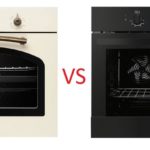When buying household appliances, many housewives have to make a rather difficult choice and understand which is better - an electric or gas oven. To make the comparison correct, we will conduct an assessment highlighting several main parameters: connection, functionality, cost, efficiency and operational safety.
Connection features
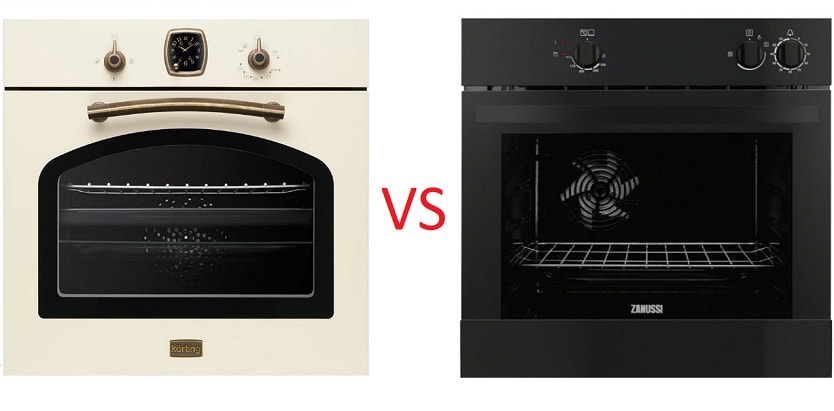
Often, the choice of the type of oven is limited by the ability to connect it. For example, if the house is not gasified, then the dilemma of which gas or electric oven to choose disappears by itself. Some gas ovens can operate from a bottle filled with liquefied gas, but this type of operation is only possible for private houses. It is strictly forbidden to use a gas cylinder in apartment buildings, even if it is installed on the balcony.
There are important features when connecting an electric oven. It should be understood that the oven is a very energy-intensive electrical appliance, its power ranges from 2 to 4 kW, while the load on the wire is long-term. Intra-house wiring of houses built during the Soviet era may not withstand such a significant load. This can cause both short circuits and network failure, and its excessive heating, which can lead to a fire.
One more point - the energy company allocates a certain amount of available electrical power for each apartment / house. Before buying and connecting an electric oven, it is necessary to clarify the size of the permissible power and make an approximate calculation. For example, in apartment buildings designed before 2006 (when installing a gas stove), the permissible power is 3 kW per apartment, when installing electric stoves - 7 kW. Will this be enough to provide all electrical appliances connected at the same time - with the current number of electrical appliances, the allocated power may not be enough. Especially if an air conditioner is installed in the apartment, plus a refrigerator, a computer and other electrical appliances are working. So you have to write to the power supply company with a request to increase the permissible power limit. I would like to warn you right away that this procedure is costly - both in terms of financial and time, because you will have to develop and agree on a new power supply project, obtain admission, conduct tests, etc. The process of obtaining admission itself can last from 2 to 6 months.
The best solution for installing an electric oven is to run a separate cable, the cross section of which will be selected taking into account the power of the oven. It is also imperative to provide good reliable grounding.
See also:
- 6 best ovens VECO 2025 of the year
- 7 best Korting ovens according to customer reviews
- 8 best Hansa ovens 2025 of the year
- The 8 Best Hotpoint-Ariston Ovens
- The 8 best ovens in Gorenje
Heating uniformity
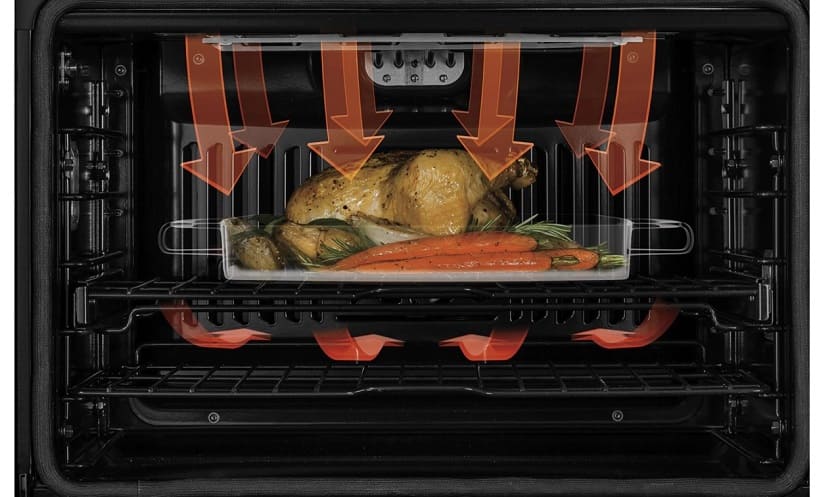
Cooking in the oven occurs due to the fact that the air transfers heat from the heating element to the dish being prepared. Therefore, the uniformity of heating the entire volume of the oven directly affects the quality of cooking. Due to the unevenness of heating, the dish will have to be rearranged or rotated to avoid burning it.
As a heating element in a gas oven, gas tubes located in the lower part are used. The heat generated by the combustion of the gas rises upward. The uniformity of oven heating is also influenced by the geometric shape of the gas tube and how it is located - as a result, some areas may heat up more intensely, while others receive less heat. Therefore, even despite the relatively small size and volume of the oven, due to unidirectional heating, temperature differences can be quite significant. The difference in the lower and upper part of the oven can be 20-30 degrees. Uneven heating becomes more pronounced even when only one baking sheet is installed, and when cooking on two, they will have to be periodically changed.
In electric ovens, heating elements (tubular electric heaters) are used as a heating element. In most cases, they are installed at the top and bottom. That is why any electric oven is superior to a gas oven in terms of uniformity of heat distribution. In the premium segment models, in order to achieve the most uniform warm distribution, additional heating elements can also be installed on the side walls.
Modern oven models are equipped with convection function. This is a function that helps to ensure that heat is distributed evenly throughout the oven. The fan creates an air stream that mixes warm and cold air throughout the volume - this solves the problem of cooking dishes on two baking sheets at once. Convection is less effective in gas ovens, as they are not sealed to allow combustion products to escape. Therefore, it will be quite problematic to achieve uniform heat distribution even with the use of convection.
![]() See also - Choosing a reliable induction stove for the home
See also - Choosing a reliable induction stove for the home
Functionality
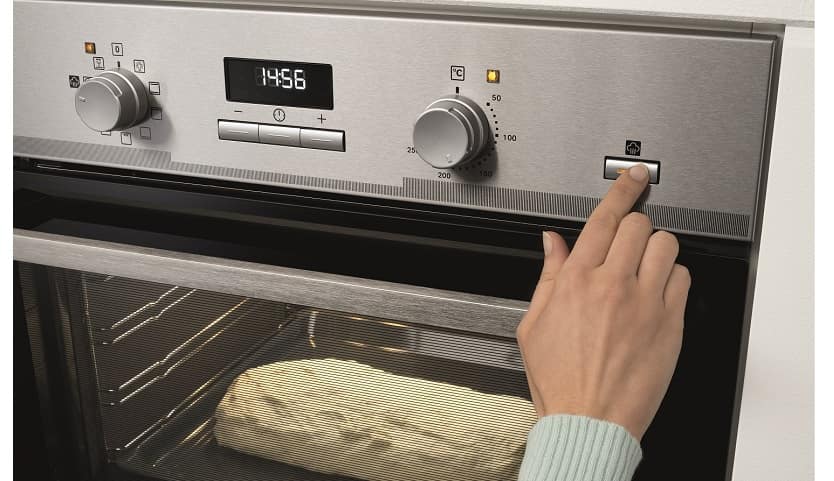
In this parameter, models of modern electric ovens are significantly superior to gas analogues. First of all, it should be noted the variability of the heat supply - the electric oven allows you to combine the top and bottom heat supply, only the top or only the bottom, a combination of heating and grilling.
Despite the fact that both electric and gas ovens have temperature controls, in electric ovens this function is more effective - it allows you to set and maintain the required value much more accurately. Plus - a larger temperature range is available in electric ovens. In addition, the electric oven has a set of different thermal modes:
- quick warm-up;
- gentle defrosting, as an option - automated programs for defrosting products, in which the temperature changes at different stages of the process;
- fermentation;
- languor;
- maintaining the set temperature of the finished dish.
Other features to note:
- convection - allows you to ensure uniform temperature conditions even when installing several baking sheets. This feature is especially in demand among baking lovers;
- timers - allow you to turn off or turn on the oven at a time specified by the user;
- probes - the ability to check the readiness of a dish by measuring the temperature inside it. This is important when cooking large (bulk) meat or fish dishes;
- cooking programs - when you select a particular dish, the oven automatically controls the temperature and cooking time;
- self-cleaning function - depending on the model, this may be pyrolytic, catalytic or hydrolysis oven cleaning, they greatly simplify the cleaning process after cooking;
- grill - an additional heater, usually installed at the top of the oven, produces a very high temperature for a crispy crust. The grill can be supplied with a spit (manual or automatic).
In some electric ovens the option of steaming is implemented, in some models they have the functions of microwave ovens. But it should be remembered that a significant minus of a large number of functions is a significant increase in the cost of the oven. At the same time, as experience shows, some functions may be very rarely used. So when choosing which oven is better than a gas or electric oven in terms of functionality, you should decide whether you need to overpay for little-demanded electric oven capabilities.
![]() See also - Pros and cons of a catalytic cleaning oven
See also - Pros and cons of a catalytic cleaning oven
Safety
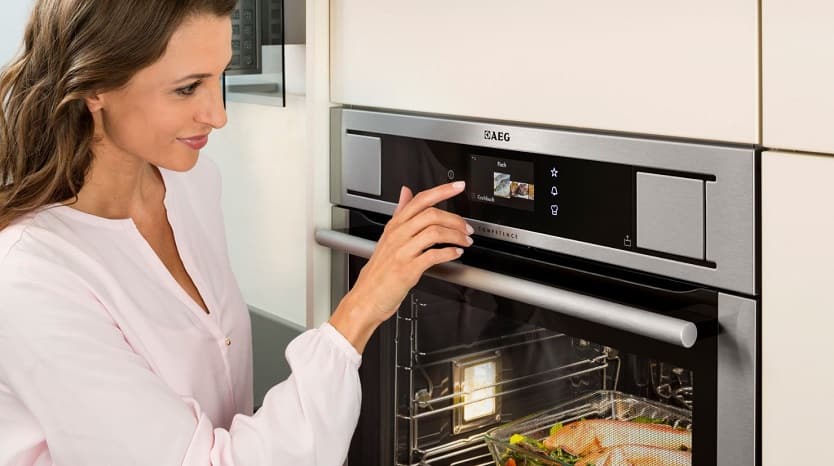
Traditionally, it is believed that gas ovens are more dangerous than electric ones due to the use of natural gas and open fire. In fact, modern gas oven models have a multi-factor security system that reduces the likelihood of a fire to zero. The gas supply sensors very carefully monitor the flow of gas, automatically shutting it off in the event of a fire. Another important aspect is good ventilation, which must ensure the removal of combustion products.
The safety of using an electric oven is directly related to its correct connection - the correct choice of cable cross-section and grounding, as mentioned above. Despite the high temperature, the ovens are thermally insulated, so the risk of getting burned by touching the outer surface of the oven is minimal. However, when buying a built-in model of an electric cabinet, you should take care that the furniture can withstand the elevated temperature. In fact, the safety level of ovens - both electric and gas - is the same.
Important:
Ensuring safety is directly related to a very important requirement - the user's exact observance of the order of using the oven, which is described in the operating instructions.
![]() See also - Choosing a compact desktop dishwasher
See also - Choosing a compact desktop dishwasher
Cost-effectiveness
According to this parameter, gas ovens look preferable than electric ones, because main gas is cheaper than electricity. However, this difference is not very noticeable if you rarely use the oven. But with the frequent use of an electric oven, which consumes from 2 to 7 kW of electricity per cooking cycle, this difference in favor of a gas oven becomes especially pronounced.
![]() See also - Which is better than an induction or electric hob
See also - Which is better than an induction or electric hob
Cost
The cost of the oven depends on a large number of parameters - the manufacturer (brand), the prestige of the brand, functionality, power, energy efficiency, materials used, year of manufacture, visual appeal, etc. But with relatively equal parameters, gas ovens are significantly cheaper than electric models.
It is almost impossible to determine unequivocally that an electric or gas oven is better. The choice depends on many factors, but the main thing is for what purposes and how often you plan to use the oven.If the minimum set of functions is enough for you and you plan to use the oven frequently, then you should carefully study the proposals of gas ovens. If the variety of prepared dishes is important to you, then it is definitely worth choosing an electric oven.
See also:

